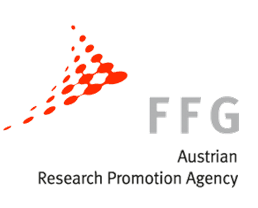Vector Detect: Detection and quantification of vectors and their associated pathogens in host tissue
Beyond being a nuisance due to their itchy and irritating bites, ticks and mosquitos can transmit a variety of pathogens including bacteria and viruses. Furthermore, they can trigger allergic reactions when biting humans. As such, they are of great medical importance and approximately 30% of the Austrian population gets bitten by ticks every year. For an optimal treatment of patients it is important to rapidly identify the species which was biting and determine if pathogens were transmitted. However, when the skin starts reacting to the bite, the blood sucking animals are often not present anymore and therefore it is unknown who exactly conducted the mischief. Moreover, it is currently not possible to detect bacterial and viral pathogens during the incubation period and even when symptoms occur, the exact diagnosis is tricky such as in Lyme-Borreliosis. This can cause major disadvantages for patients.
Ticks and mosquitos release a cocktail of substances into the skin when they feed on our blood. Besides, they release pathogens and trace amounts of their DNA into the bite that should be detectable in the host’s skin for several days. This project aims at developing molecular tools which allow detecting the DNA of the vector and potentially transmitted pathogens at the bite site in the tissue of the human host. Experiments will be conducted to examine how much DNA is released into the skin and for how long it can be detected after the bite occurred. A rapid and reliable detection of the vector as well as of any pathogens which have been transmitted will allow for quick and specific medical interventions. This will substantially improve the prognosis and the therapy of both allergic reactions and pathogen-induced diseases.
This project is funded by the Austria Research Promotion Agency (FFG) within the BRIDGE programme where the Gernot Walder GmbH (Gernot Walder) acts as the industry partner. Furthermore, VectorDetect involves the scientific collaboration with Cornelia Speth and Günter Rambach (Medical University of Innsbruck), Cornelia Becker and Katrin Liebig (University of Veterinary Medicine Hannover, Germany) and Radek Sima (Institute of Parasitology Biology Centre, České Budějovice, Czech Republic).
ATE members involved in VectorDetect:
- Daniela Sint & Michael Traugott (PI)
- Christiane Zeisler

